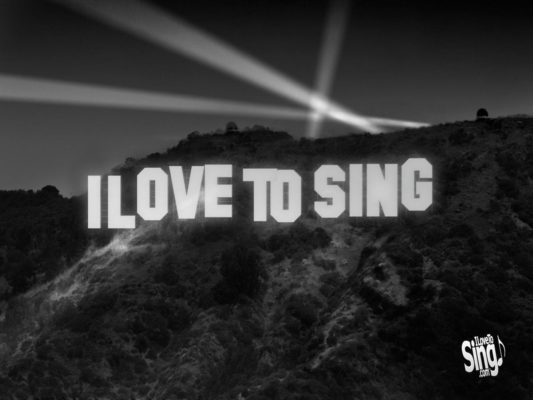There are so many different professions and elected positions of responsibility, in which extensive and continuous use of the Voice is essential and unavoidable.
Many of us might initially consider this to be the sole professional requirement of singers, but what of the needs of actors, radio and television presenters, lecturers, teachers, sales men and women and also mothers of multiple toddlers and small children?
These examples amongst many others each demand their own constant, extensive and reliable use of the Voice.
Here at the Tim Lynk School of Vocal Excellence, the revolutionary Vocal system developed by Jo Estill continues to have the most significant influence, because it has been reliably proven to bring transformational and measurably positive Vocal outcomes.
Most Vocal students (singers and other Voice users, mentioned above) have presented here with a variety of obstructive and limiting Vocal issues, often from having unintentionally used their Voice unsustainably over an extended period of time.
Fortunately, the huge majority of these issues are untangled fairly quickly using Vocal maintenance and repair techniques.

Having untangled the problems of the past, we now forge ahead to develop a brand-new, safe and sustainable use of the Voice, also opening up new and exciting Vocal control, ‘colours’ and ‘textures’.
Unlike many traditional Vocal coaching and tutoring methods, the first step here is developing ‘kinaesthetic awareness’ of all the muscular structures in the Vocal tract, from which the Vocal sound is either produced, filtered or supported.
We learn to identify the unique functions and Vocal applications that every component in the Vocal tract presents, which, in conjunction with our emerging Vocal tract awareness, lays the groundwork for the student to begin learning how to control the isolation and/or combination of strategically chosen muscular structures to produce specifically nominated Vocal events.
Any instrumentalist (and this, of course includes students of the Vocal instrument) will embark upon their journey by learning the first of three essential learning outcomes, namely the construction, properties and physical characteristics of the instrument itself.
This comes under the heading ‘Craft’ – learning your ‘Craft’ about the inherent abilities, structures and sonic options of the Voice, as you would logically need to do when you start learning any instrument.
Once having gained a working knowledge of ‘Craft’, we begin to experience the natural flow-on effect into the second of the three essential learning outcomes, namely ‘Artistry’.

‘Craft’ and ‘Artistry’ are such vastly different areas, that one might be forgiven for seeing them as unrelated; without first developing a workable knowledge of the instrument, however, artistic expression is unlikely to ever be fully available.
Having developed our ‘Craft’ we will start to noticeably experience greater ease and new choices as we achieve ‘Artistry’ – the creative, artistic options and freedoms, that give our performances interest and appeal both to ourselves and also to our audiences.
The way is now beginning to open up for the third and final learning outcome, namely the powerful and enthralling element of ‘Performance Magic’.
The likelihood of achieving these sublime and mesmerising ‘golden moments’ in your Vocal performance is now greatly increased, leaving your audiences aghast, spellbound and, of course, cheering for more.
So, what we will have now therefore achieved is…
- A trouble-free instrument in freshly recalibrated and pristine condition.
- A safe and sustainable method of continued Vocal usage by learning and developing ‘Craft’ knowledge.
- A new-found freedom to express your ‘Artistry’ without the compromising limitations of the past.
- More frequently reliable ‘Performance Magic’ events.
Here is what Jo Estill has to say in her own words…

“Everyone has a beautiful voice. You just have to know how to use it.”
Can it be any simpler than that?
And ‘Vocal beauty’ is defined by you – not anyone else.
What would having a ‘beautiful Voice’ mean for you?
A Voice that commands the attention of a crowd?
A Voice that sounds like your favourite recording artist?
A Voice that works hard all day on the telephone and still feels great for an evening out with friends?
The ability to explore the full range of expression in the human Voice, but not at the expense of Vocal well-being by promoting “Most Comfortable Vocal Effort” at all times.
Efficient Voice Training separates ‘Craft’, ‘Artistry’, and ‘Performance Magic’.
‘Craft’ is learning how to control the various structural components of the Voice.
Each structure contributes to sound and feeling of the Voice.
Control of these structures leads to unlimited options for changing – or maintaining – Voice quality, without Vocal strain.
‘Craft’ is the foundation.
‘Artistry’ requires knowledge and demonstration of the stylistic elements of a performance practice.
‘Artistry’ gives you the know-how to make your performance vision a reality.
Commonly this principle applies to dramatic and musical endeavours, but there is also ‘Artistry’ in effective communication in a lecture, sales presentation, or customer service call.
‘Magic’ encompasses the indescribable experience of becoming one with your audience.
‘Magical Performances’ are breath-taking, goose-bump-raising, transformational experiences for both Vocalist and audience.
But these magic moments can be rare, unpredictable, and fleeting.
Having a strong foundation of ‘Craft’ and ‘Artistry’ improves your chances of experiencing ‘Performance Magic’, finding that ‘zone’ more frequently.
Benefits:
- Replaces mystery with knowledge.
- Reduces performance anxiety.
- Promotes confidence.
- Empowers students to make choices.
- Provides Vocal variety.
- Leaves nothing to chance.
- Leads to a balance of Vocal health and aesthetic freedom.
